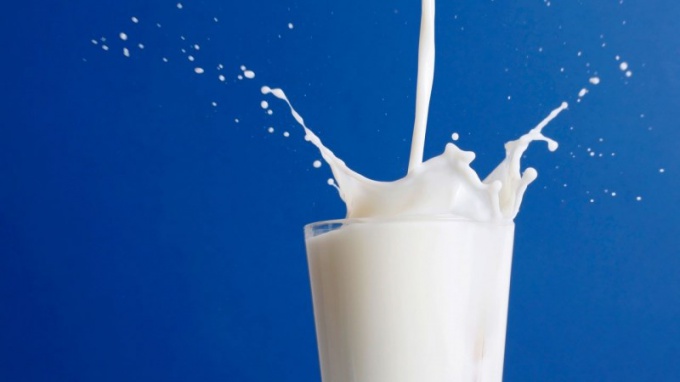One of the most important indicators of the quality of milk is its fat content. Milk fat has a positive effect on the human body, enriching it with useful arachidonic acid and protein-lecithin complex. Naturally, in high fat content milk will contain much more vitamins and nutrients than skim.
Early on milk fat can be affected only with a correction cow feed. Today it is done at the stage of processing of the product by mixing in varying proportions its fat and fat-free fraction. This allows not only to vary the fat content of milk but also to improve its quality, because the fat after homogenization dissolves in all volume of milk, and not accumulate on its surface.
Depending on the fat content, milk is classified into four kinds. So, the product, which is present from 4 to 6% cream, apply to the milk of high fat content. Normalized milk contains 3.2% fat, and milk with reduced fat content – 0.5 to 2.5%. Low fat or contains very minimal amount of cream, or does not contain them at all.
The shelf life of homemade milk depends on the fat content. The more cream is contained in the product, the shorter time it can be stored. This is because the more fat in the product more rapid development of lactic acid bacteria. Without a fridge this product is better not to keep more than 6 hours and in cold homemade milk can be stored no more than 2-3 days.
The shelf life of milk purchased in the store, depends to a large extent from the method of processing and packaging. So, pasteurized milk is brought to boiling, can be stored for 4 days in film packing, 7 days in a cardboard and up to two weeks in Tetra Pak. UHT milk is heated to 135оС and then rapidly cooled, packaged in Tetra Pak and stored from 6 to 8 weeks. And sterilized milk subjected to prolonged heating to 150 ° C, stored for a long time - about 6 months.
The shelf life of milk is influenced largely and storage conditions before opening the package and after. As well as the integrity of the product packaging. Milk with an unpleasant smell or sour-bitter taste is better not to drink, even if the expiration date has not expired.
The types of milk depending on fat content
Early on milk fat can be affected only with a correction cow feed. Today it is done at the stage of processing of the product by mixing in varying proportions its fat and fat-free fraction. This allows not only to vary the fat content of milk but also to improve its quality, because the fat after homogenization dissolves in all volume of milk, and not accumulate on its surface.
Depending on the fat content, milk is classified into four kinds. So, the product, which is present from 4 to 6% cream, apply to the milk of high fat content. Normalized milk contains 3.2% fat, and milk with reduced fat content – 0.5 to 2.5%. Low fat or contains very minimal amount of cream, or does not contain them at all.
Storage of milk
The shelf life of homemade milk depends on the fat content. The more cream is contained in the product, the shorter time it can be stored. This is because the more fat in the product more rapid development of lactic acid bacteria. Without a fridge this product is better not to keep more than 6 hours and in cold homemade milk can be stored no more than 2-3 days.
To extend the shelf life of homemade milk, it can be heated to 98оС, then quickly cool, pour into a clean glass container and put into the refrigerator. This product can be drunk for 5 days.
The shelf life of milk purchased in the store, depends to a large extent from the method of processing and packaging. So, pasteurized milk is brought to boiling, can be stored for 4 days in film packing, 7 days in a cardboard and up to two weeks in Tetra Pak. UHT milk is heated to 135оС and then rapidly cooled, packaged in Tetra Pak and stored from 6 to 8 weeks. And sterilized milk subjected to prolonged heating to 150 ° C, stored for a long time - about 6 months.
Pasteurized milk is considered the most useful, because it retains most of the vitamins and minerals. But in sterilized they are practically absent.
The shelf life of milk is influenced largely and storage conditions before opening the package and after. As well as the integrity of the product packaging. Milk with an unpleasant smell or sour-bitter taste is better not to drink, even if the expiration date has not expired.
